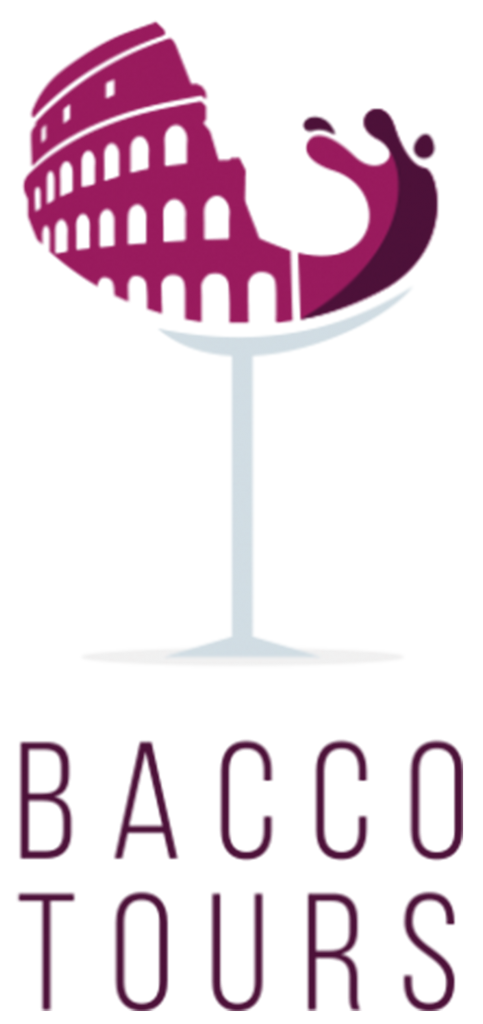Top 10 Vatican Museums
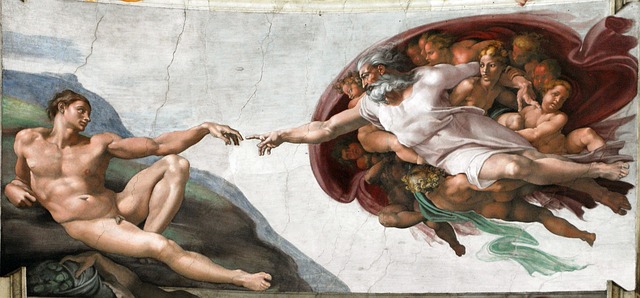
Sistine Chapel
The Sistine Chapel is full of amazing frescoes. The side walls are decorated with frescoes by Perugino, Ghirlandaio, Pinturicchio, Botticelli and were commissioned by the Pope Sixtus 4th. On the ceiling the famous creation by Michelangelo was realized in only 4 years. On the northern wall there is the stunning Last Judgement also by Michelangelo with Jesus in the middle, the saints on heaven and the demons in the hell. The Sistine Chapel is a must when in Rome. Here you can read when it is the best period to visit the Sistine Chapel. Info about tickets and guided tours.
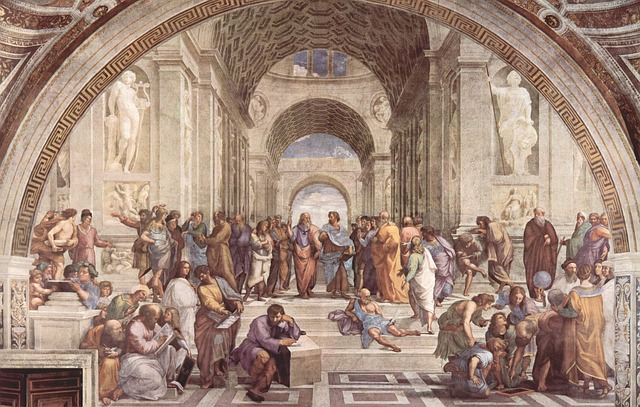
The school of Athens and Raphael's rooms
While Michelangelo was painting the ceiling of the Sistine Chapel, Raphael was decorating the papal apartments, creating the rooms now famous with the name Raphael's rooms. The most famous is the School of Athens, the fresco that was decorating the Papal private library in the room of the signature, the room where the Pope signed his documents. In this fresco Raphael and his pupils represented all the most important philosophers of ancient Greece. In the middle Platoon and Aristotheles pointing the heaven and the earth. Platoon was represented with the features of Leonardo da Vinci. Then you can also recognise Socrates, Alexander the great, Eraclito, Euclides, Protogene and many more. From Raphael in the Vatican museums we have also the Transfiguration, the wall tapestries and a lot more.
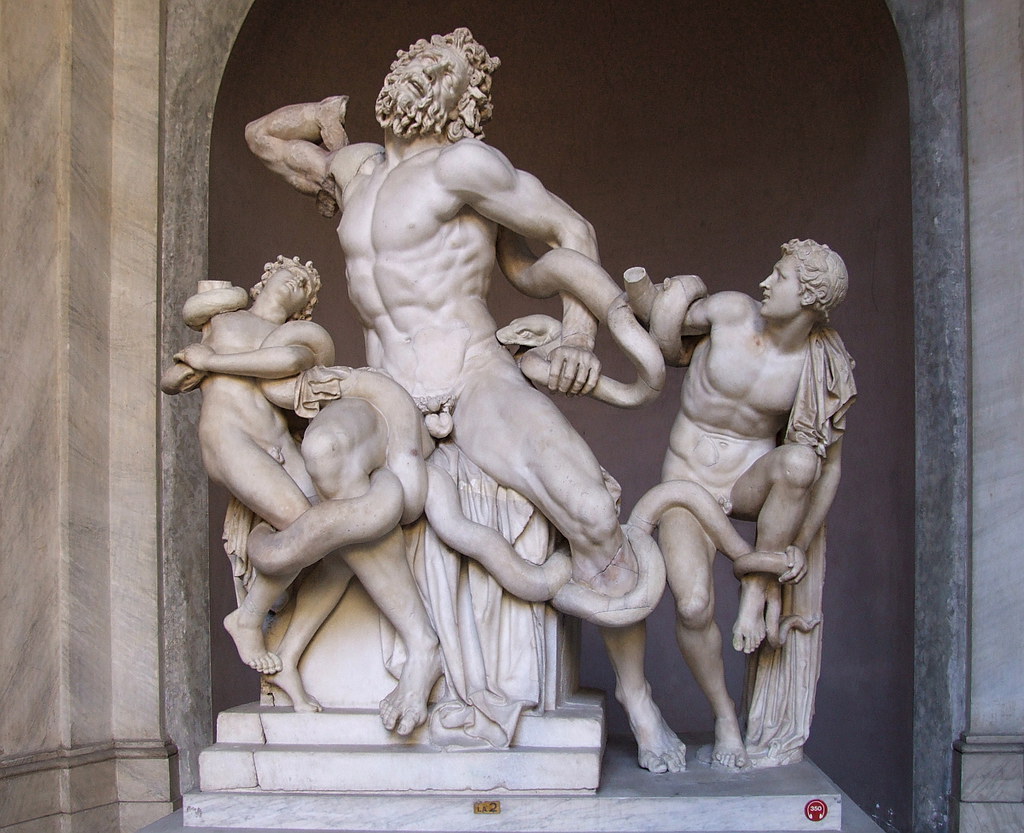
Laocoon
The Laocoon is one of the most important statues ever. The roman writer Pliny the Elder described this statue as the most beautiful statue of that time. The Trojan priest Laocoon warned the trojan people about the wooden horse. Athena, angered, sent snakes to kill the priest and his two sons.
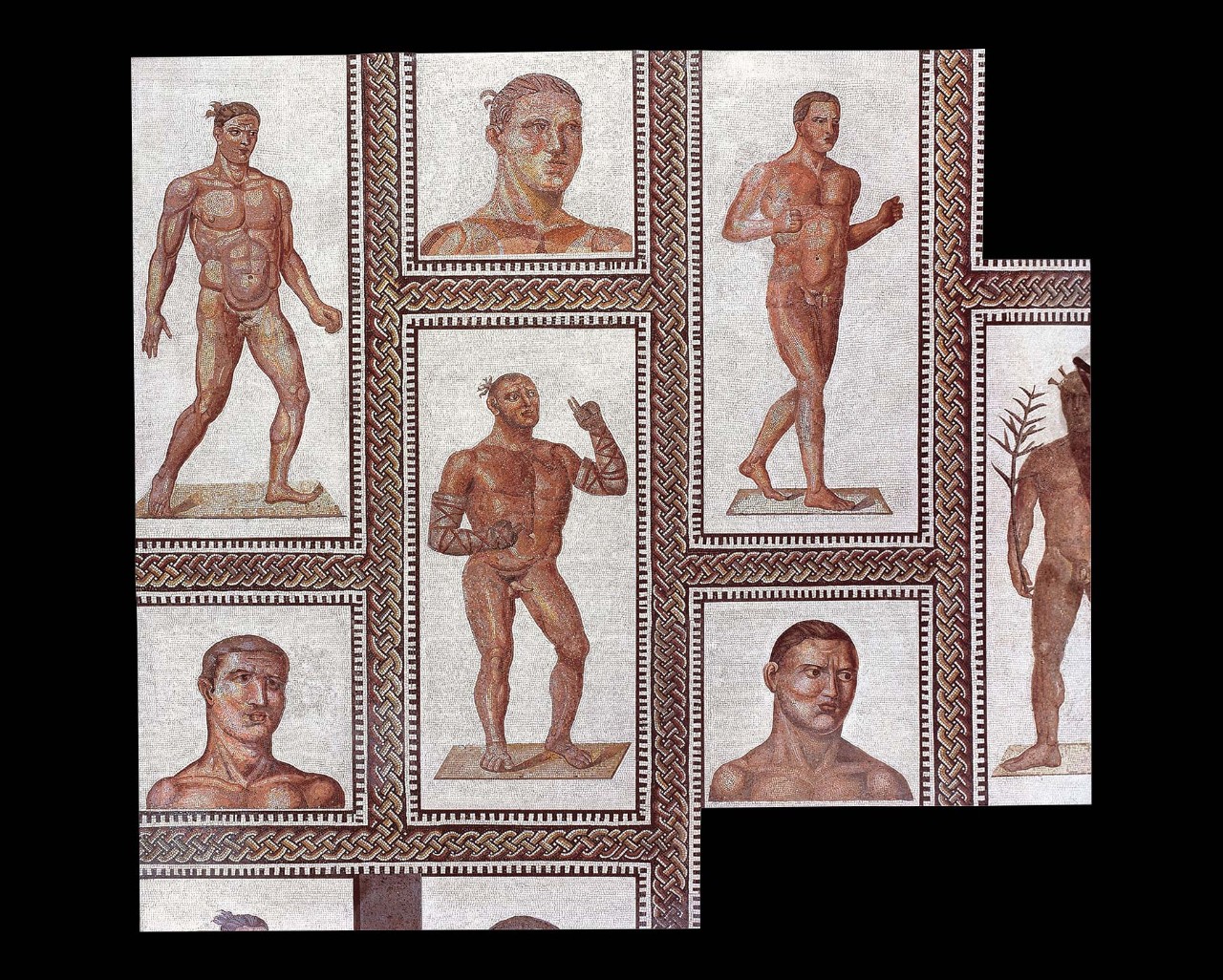
Mosaic with athletes
The mosaic is very important because it attests the some ancient sports. It was found in the thermal baths of Caracalla. The mosaic is representing different athletes naked with the simbols of their sports discipline. The referees are dressed with a white tunica. Some names are also written.
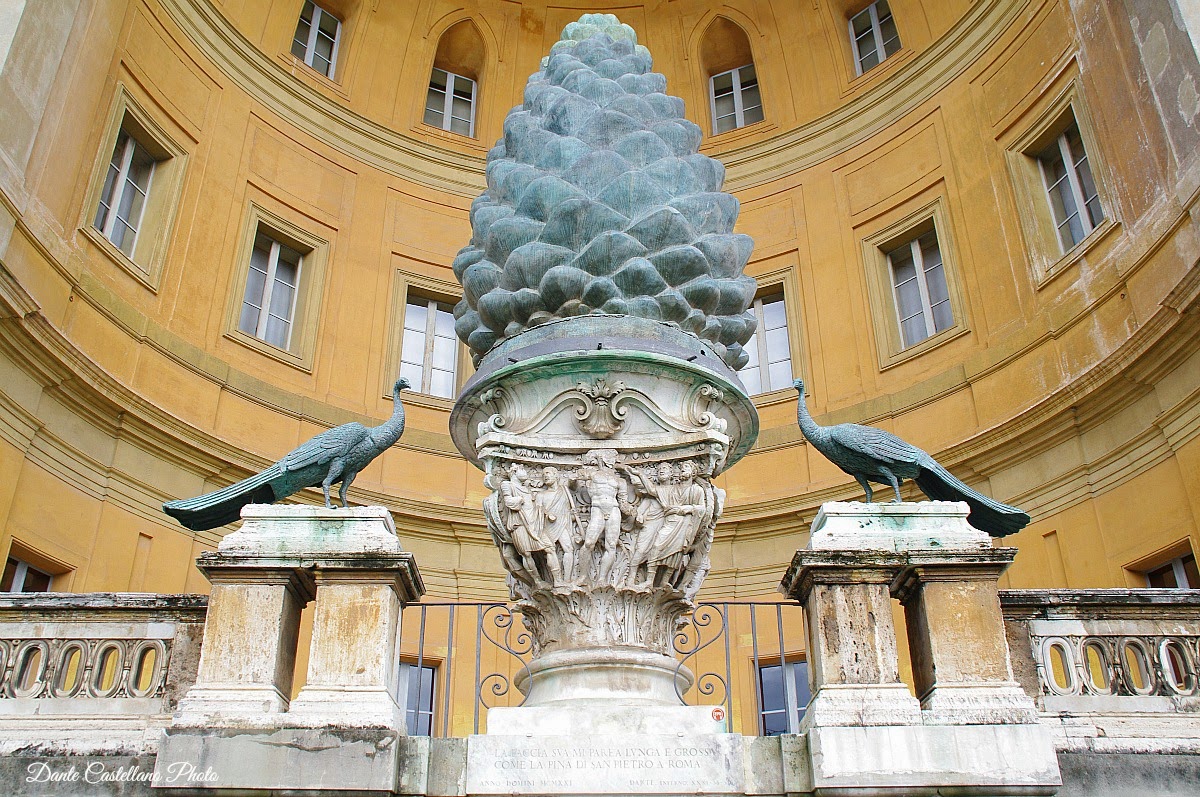
Bronze Pine Cone
The huge Pine Cone by bronze is called in Italians La Pigna. A district nowadays of Rome is named after this huge decoration. It was originally a fountain and decorated the courtyard of the ancient St Peter's basilica. The two bronze peacocks were decorating the Mausoleum of Hadrian, today known as the Castle of the Angel
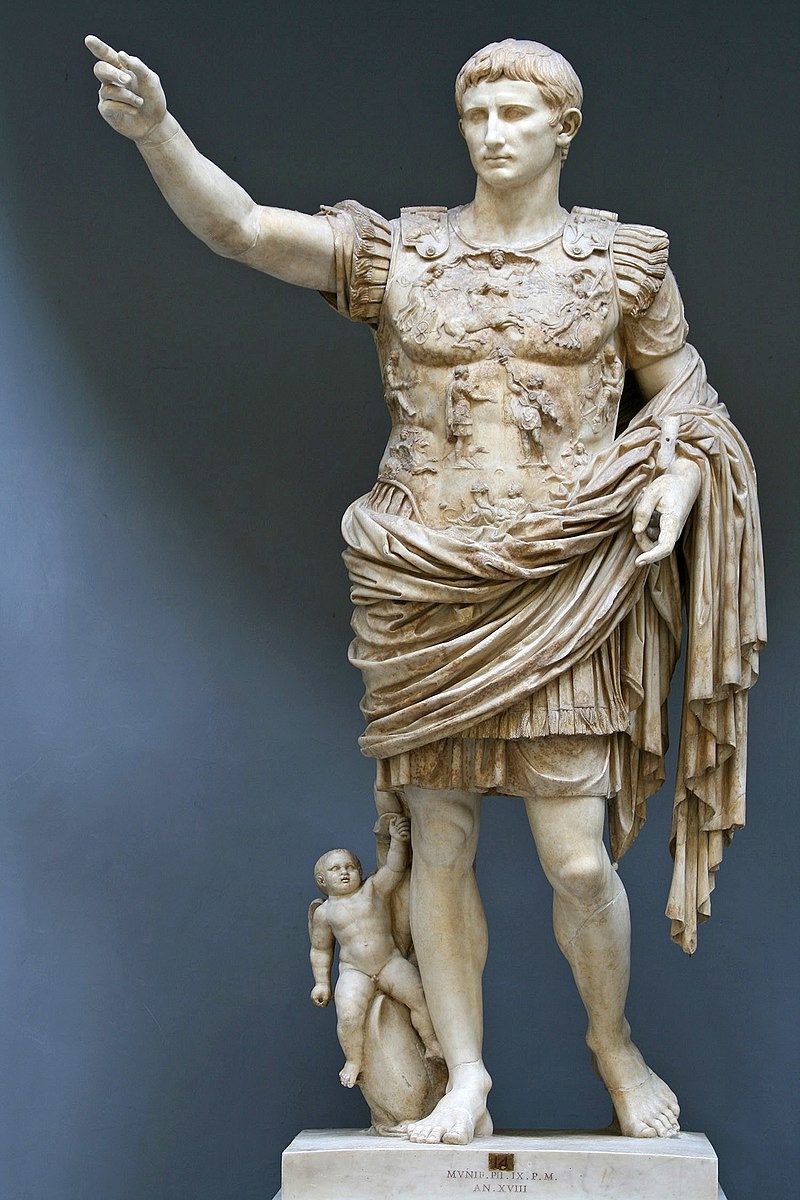
Augusto di prima porta
This statue was found in the Villa of Livia, Augustus wife. The statue was originally painted. Augustus is represented as a military general and with the little Cupid, Mars and Venus mithological son.
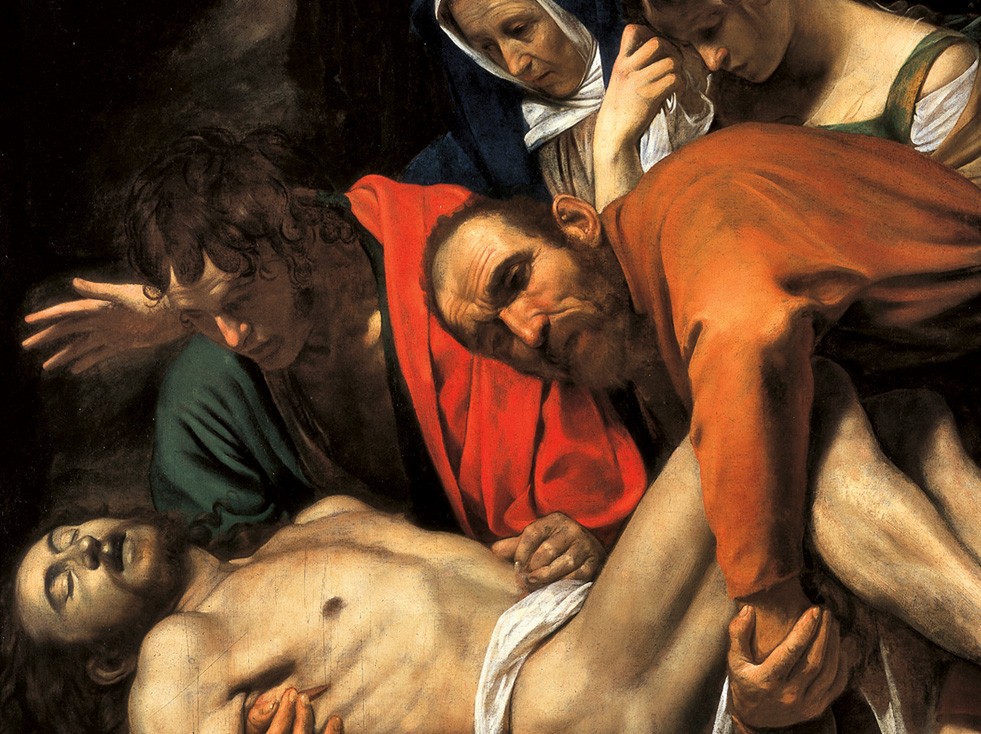
Caravaggio - The entombment of Christ
Michelangelo Merisi from Caravaggio admired a lot his predecessor Michelangelo Buonarroti and he decided to be called Caravaggio, the city where he came from. In this painting, the body of Christ is recalling the position of the Pietà carved by Michelangelo. Also the face of Nicodemo (the man starring at the viewer) seems to be a portrait of Michelangelo.
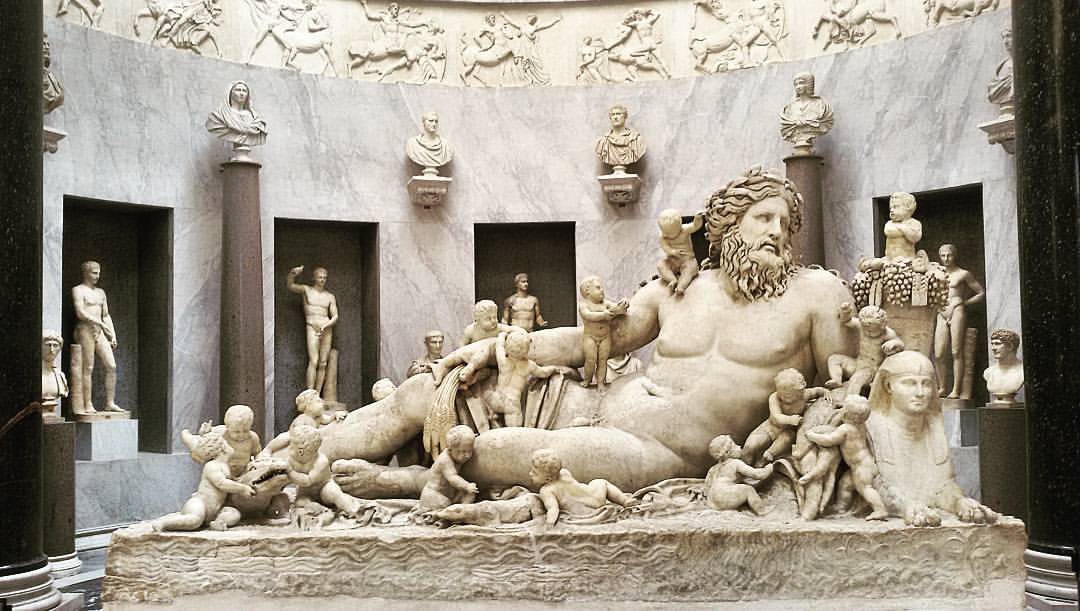
Nile
Found in the Campo Marzio in Rome, the statue was probably decoarting the temple of Isis and Serapis. Sphinxs and crocodiles identify the God with the Nile. Very beautiful are the 16 puttoes.
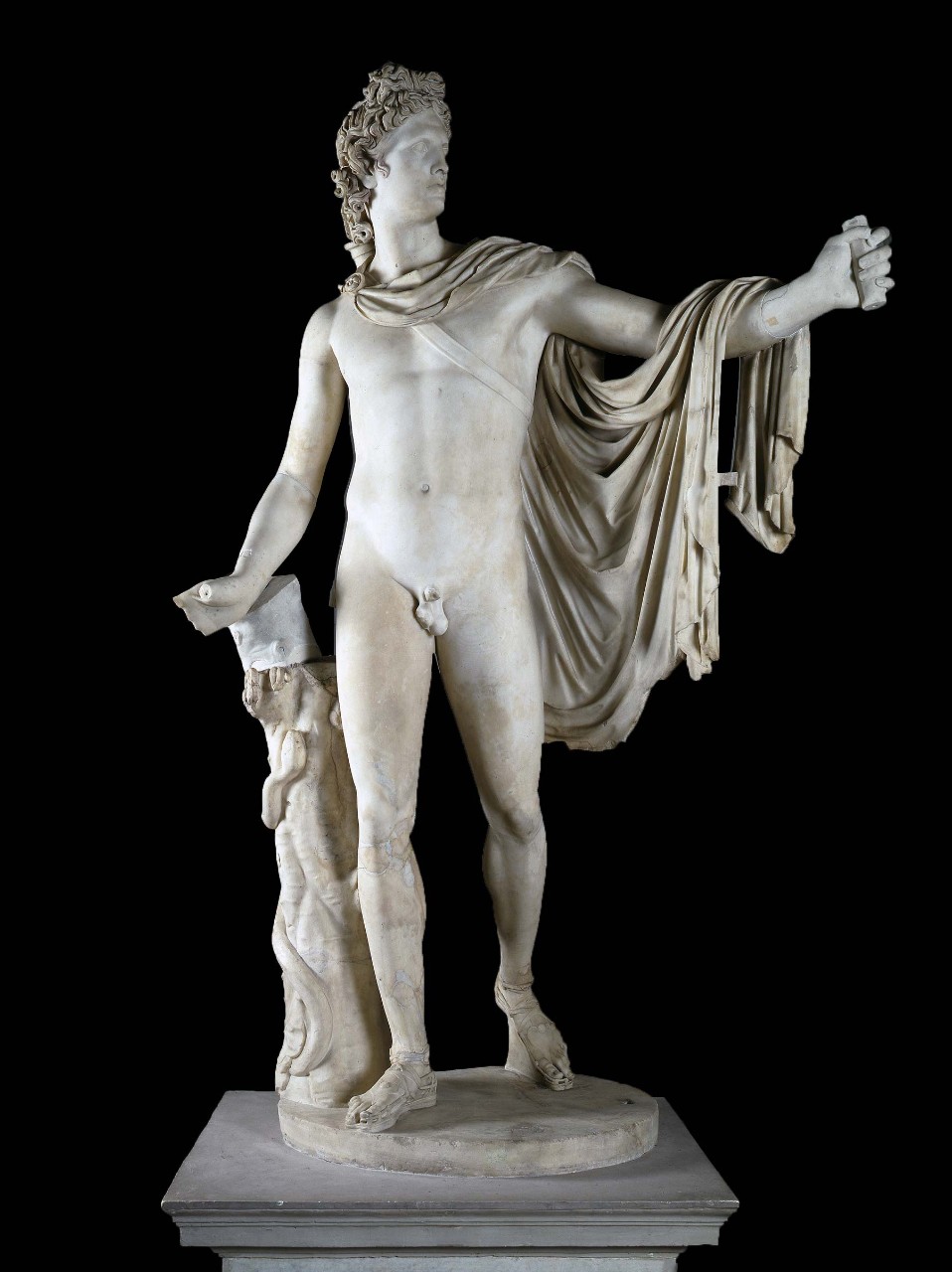
Apollo del Belvedere
The God of War Apollo is represented with the arrow and the bow. The original bronze statue was in the Athens Agora. Many artists admired this statue, Michelangelo painted the face of Jesus as the Apollo del Belvedere, Bernini also copied the face of Apollo in his famous statue Apollo and Dafne in the Galleria Borghese. Winckelmann said: Of all the works of antiquity that have escaped destruction, Apollo represents the highest ideal of Art.
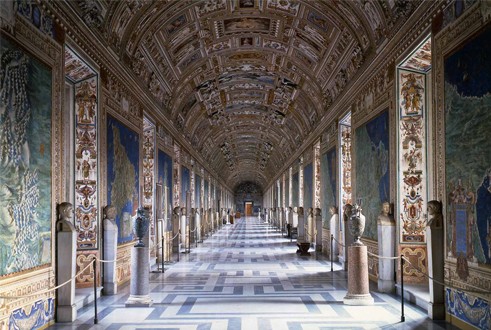
Gallery of the Maps
The stunning gallery of geographical maps were realized by Ignazio Danti and his pupils in the 16th cenutry. The gallery shows the different regions of Italy from south to north. The maps were made without modern tecnologies and were commissioned by the Pope Gregory Boncompagni.
